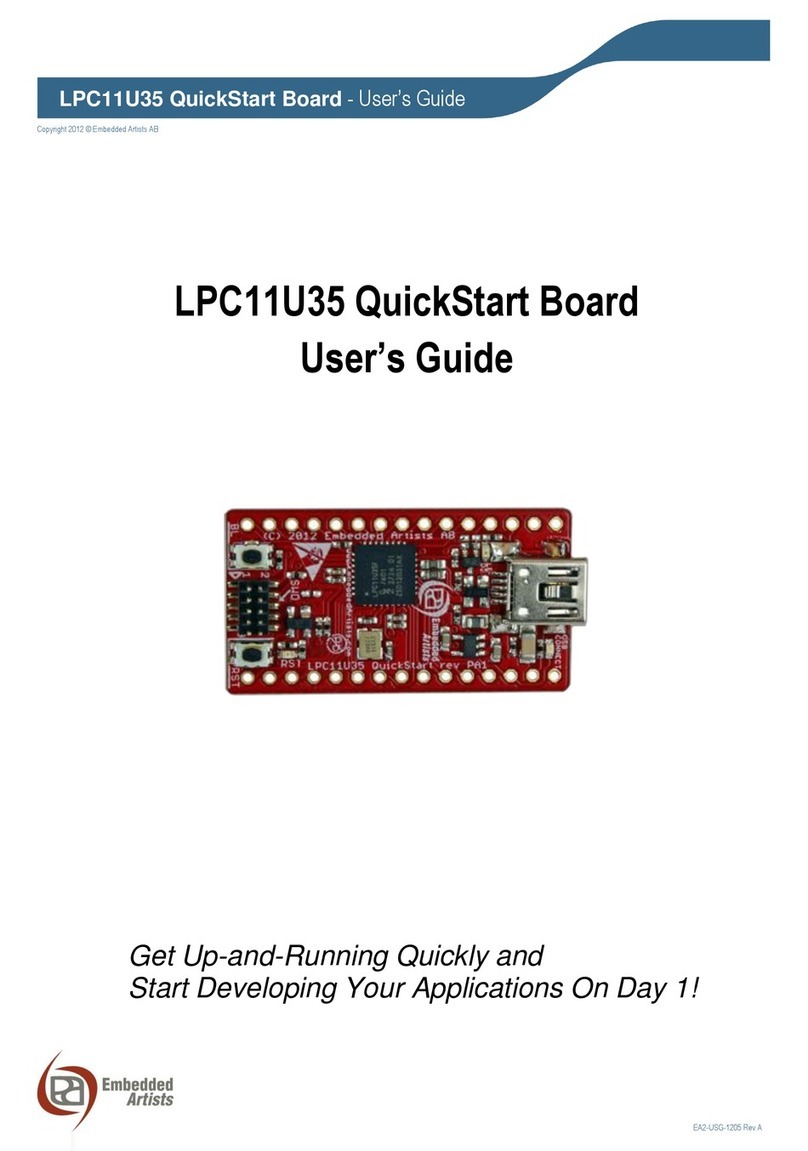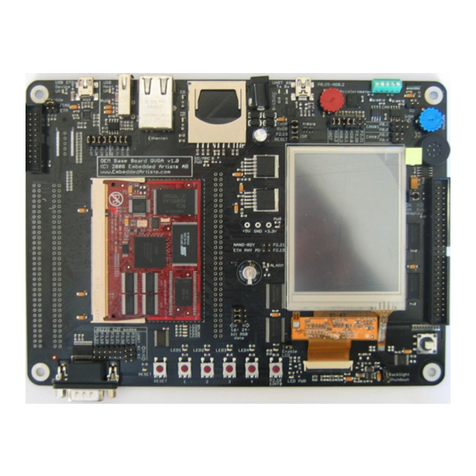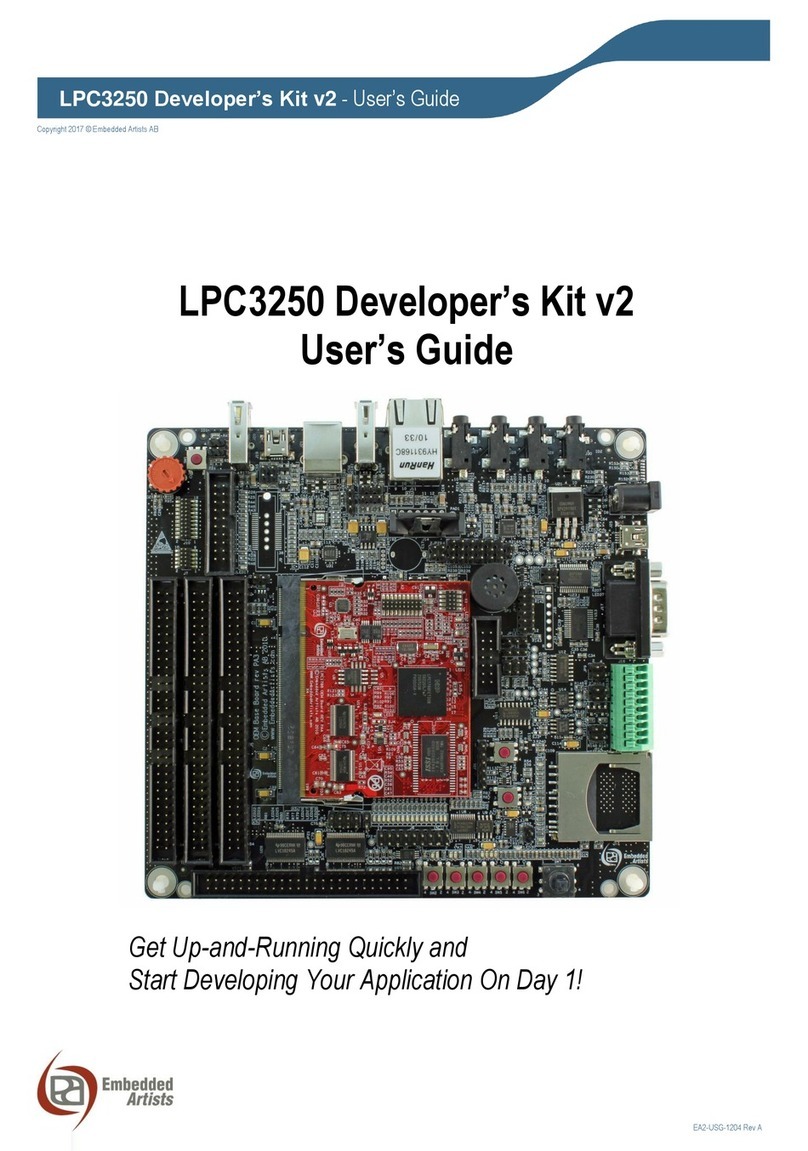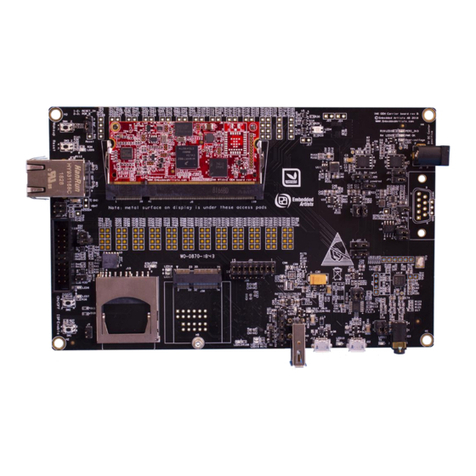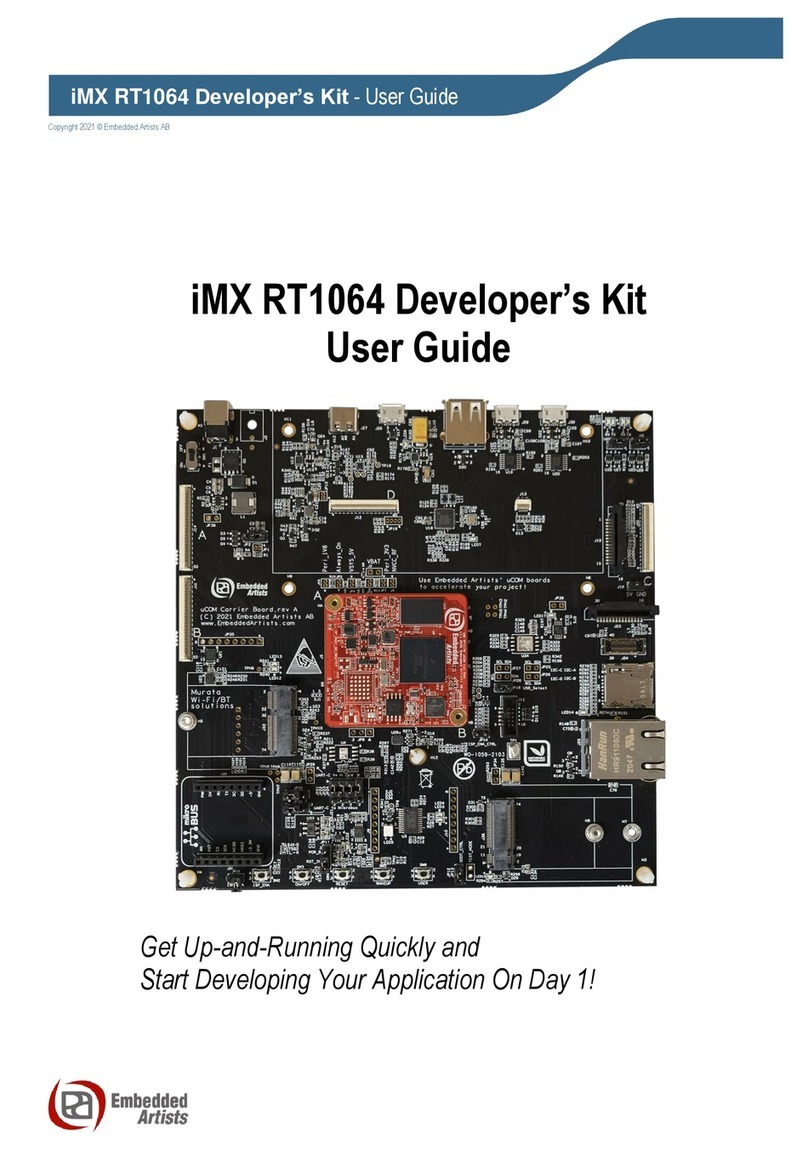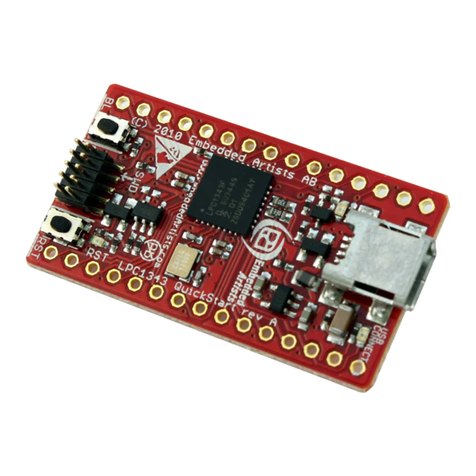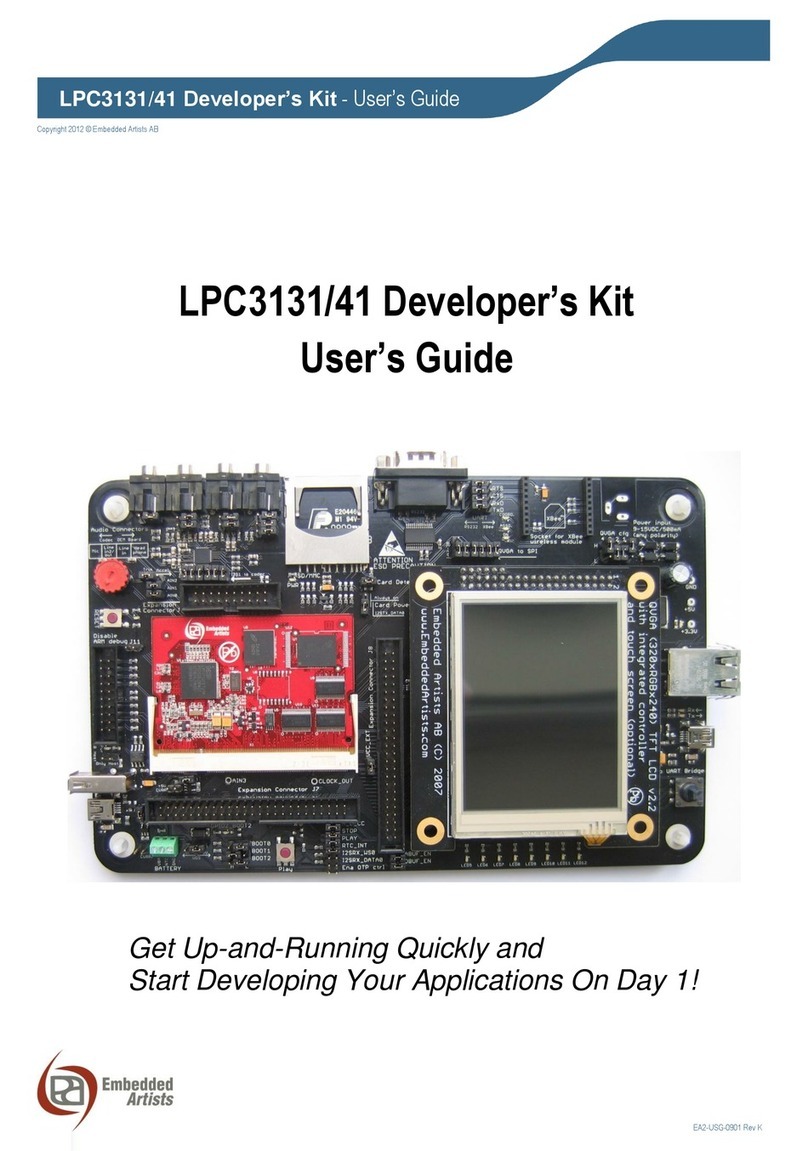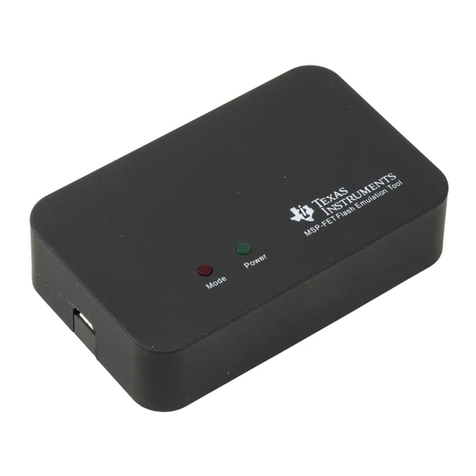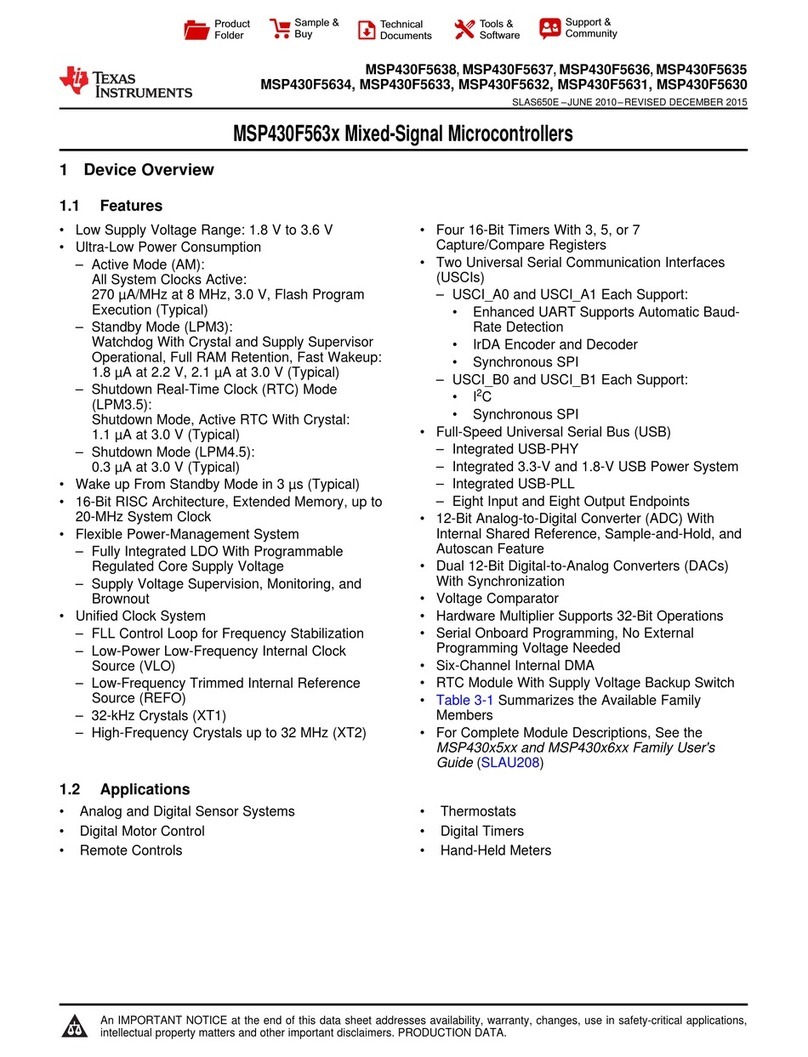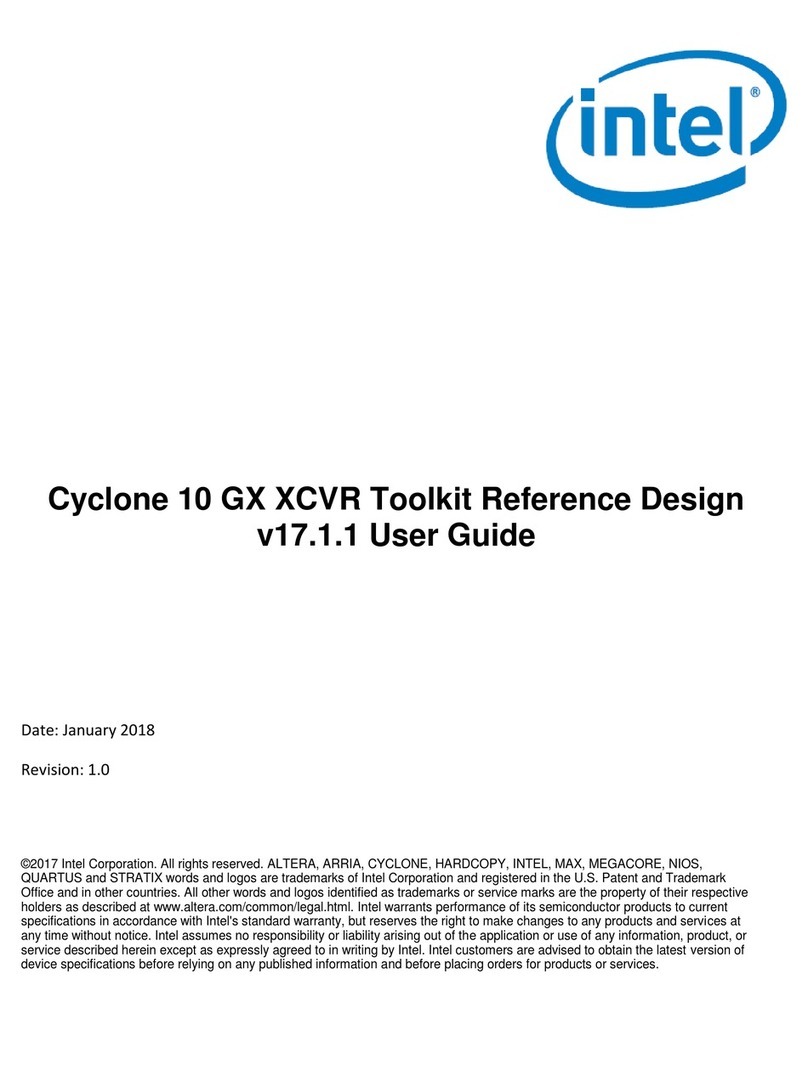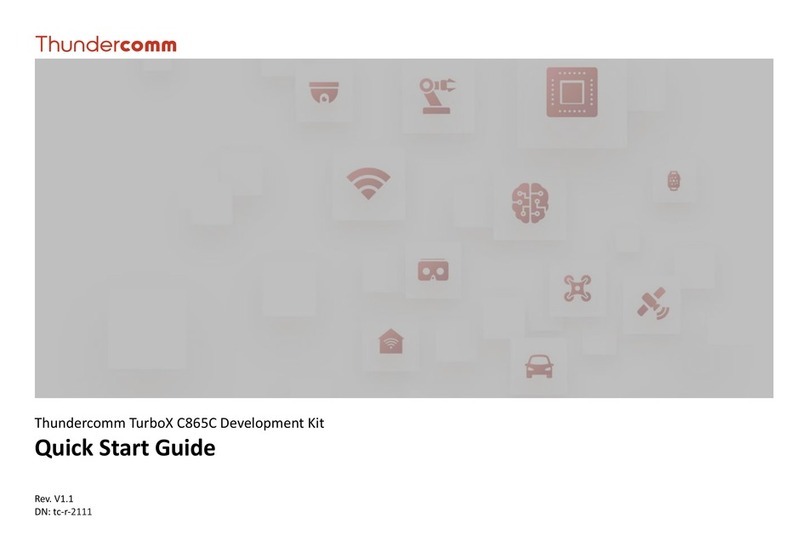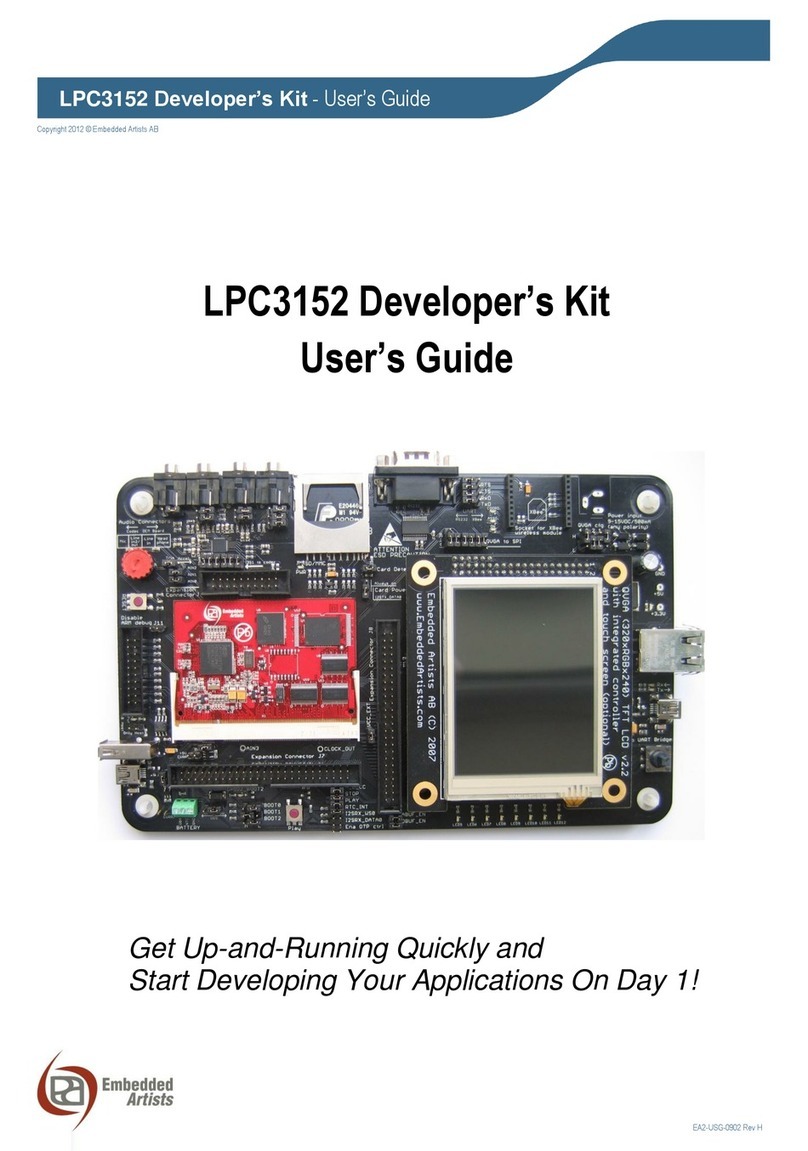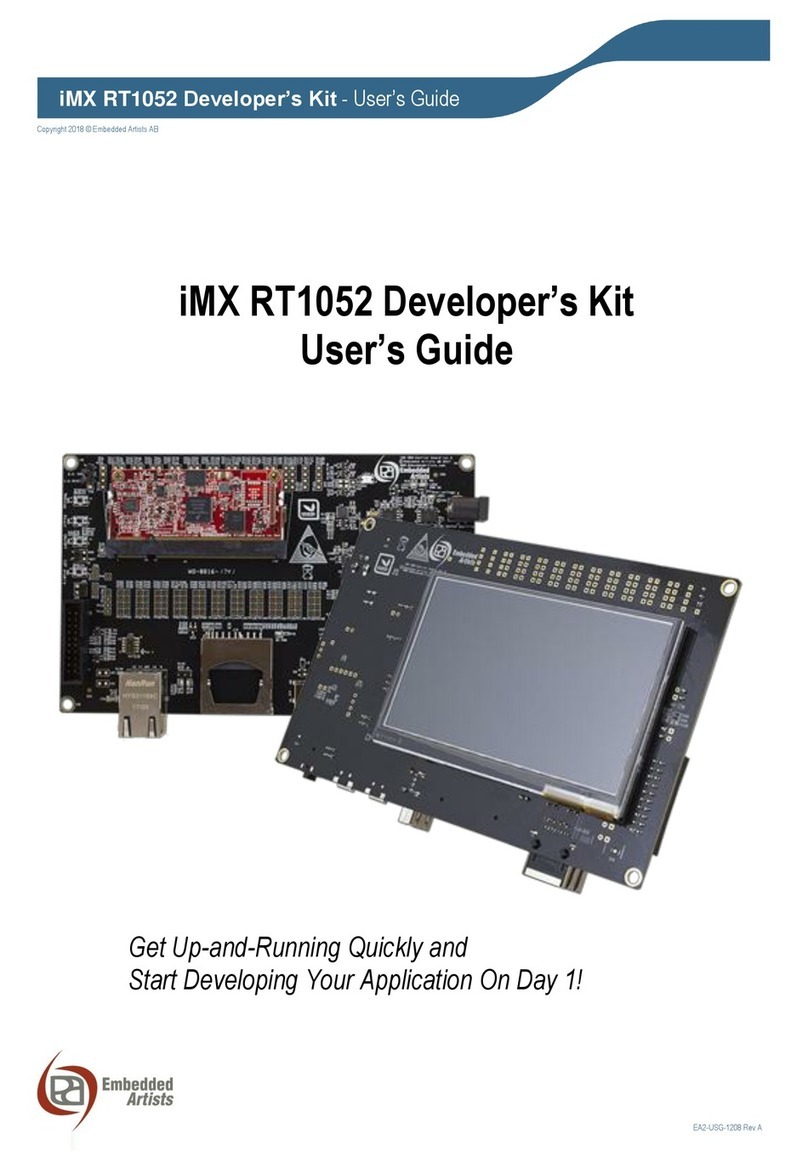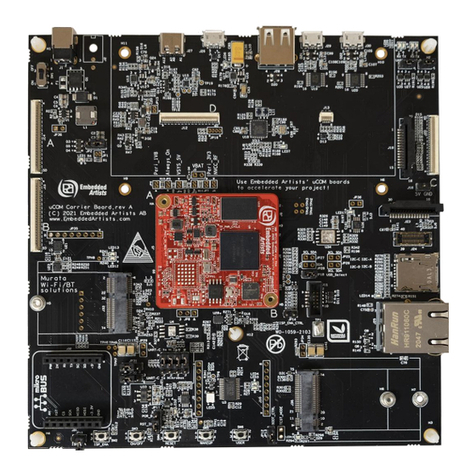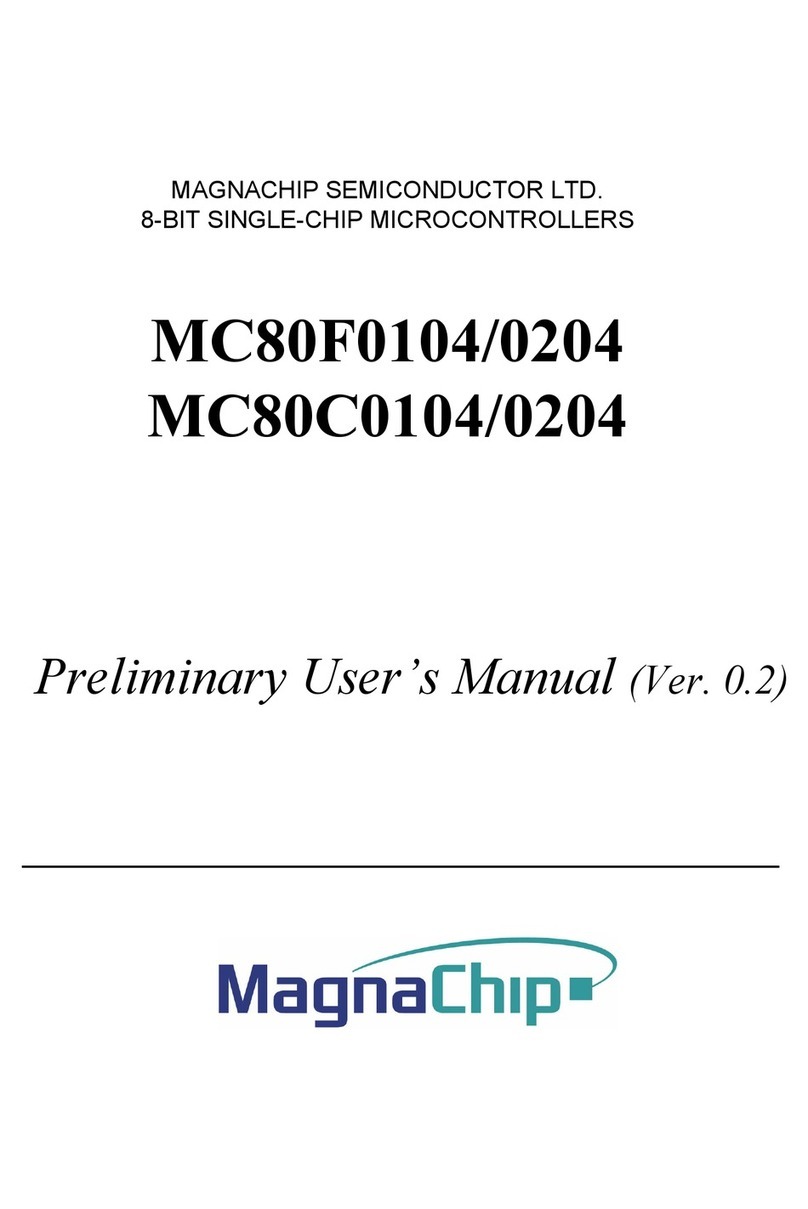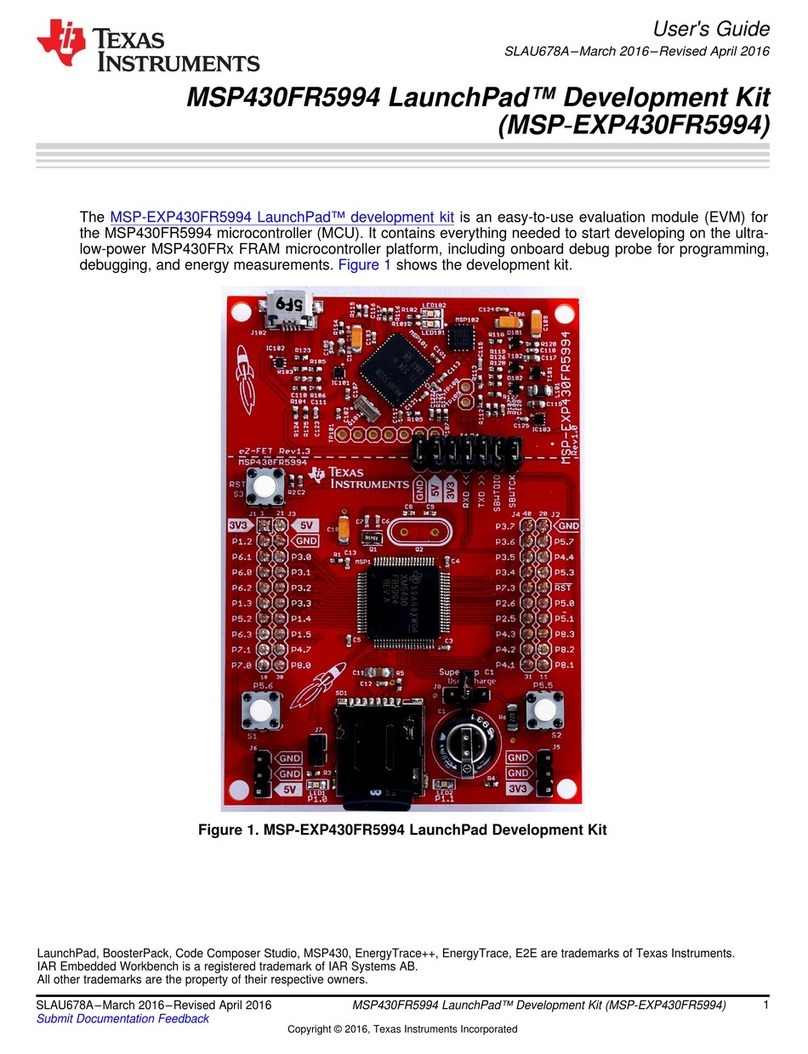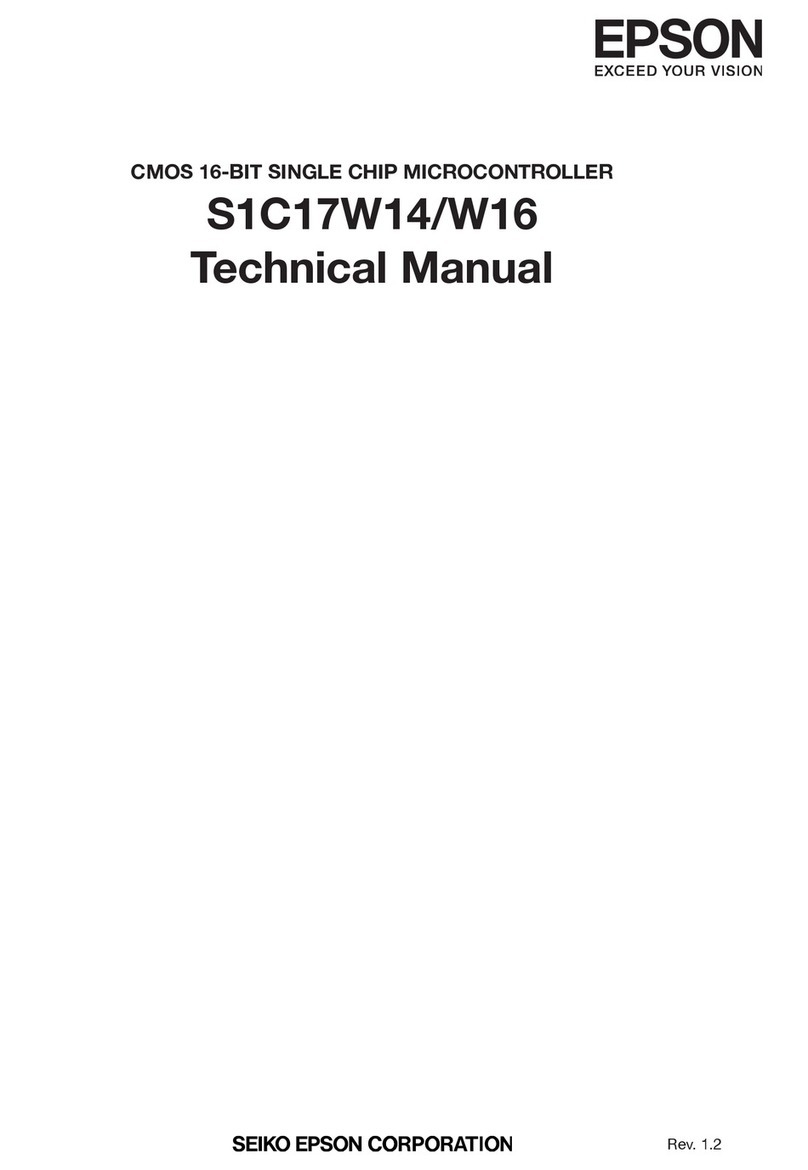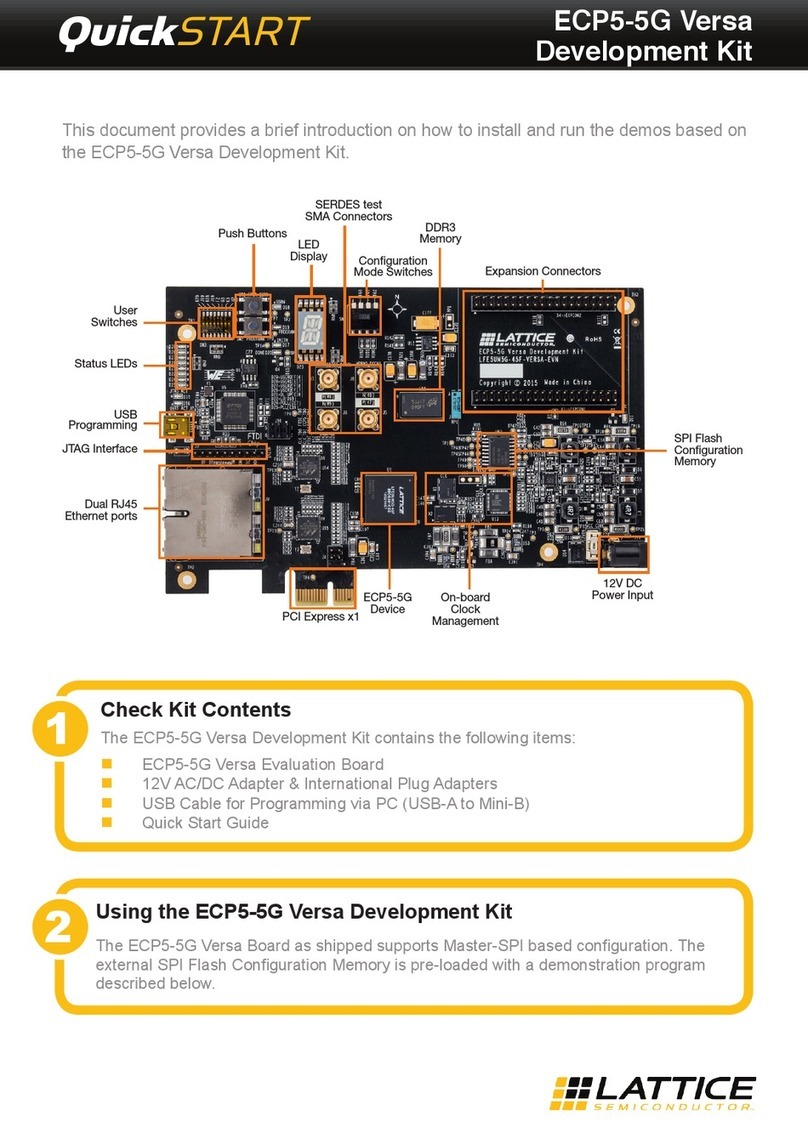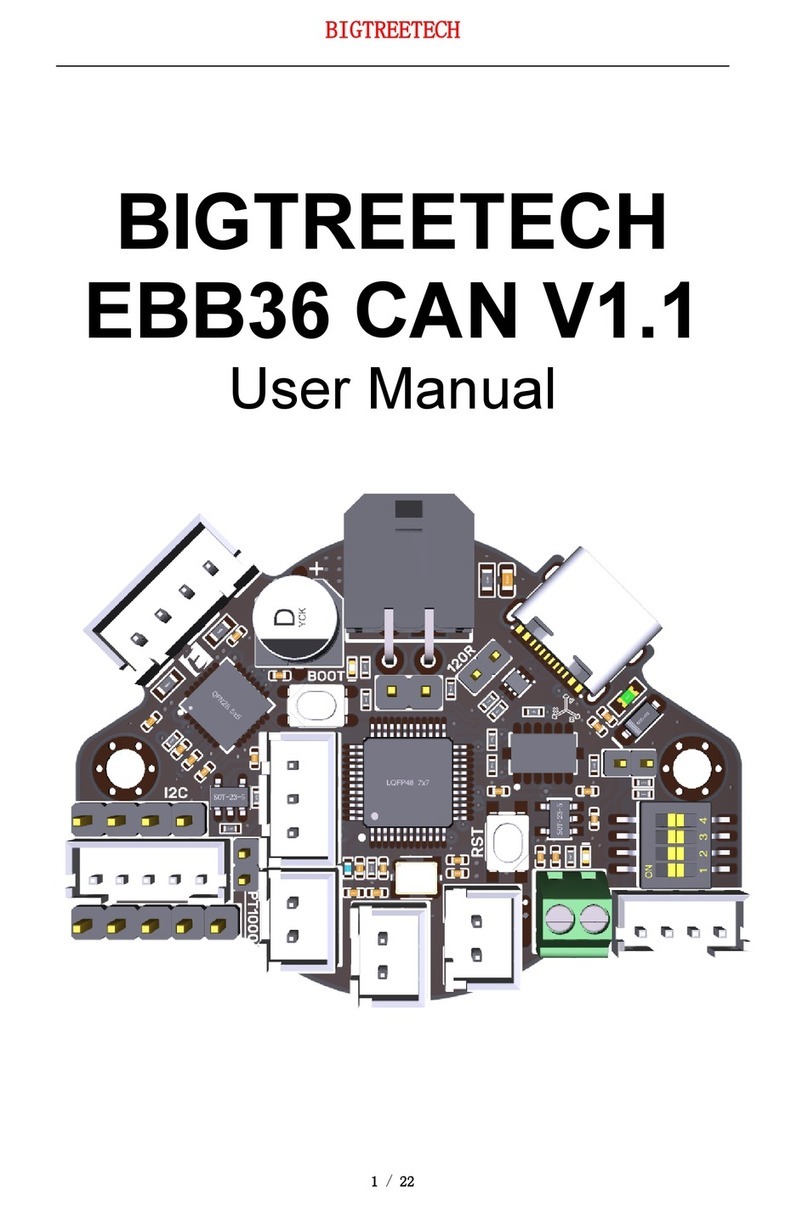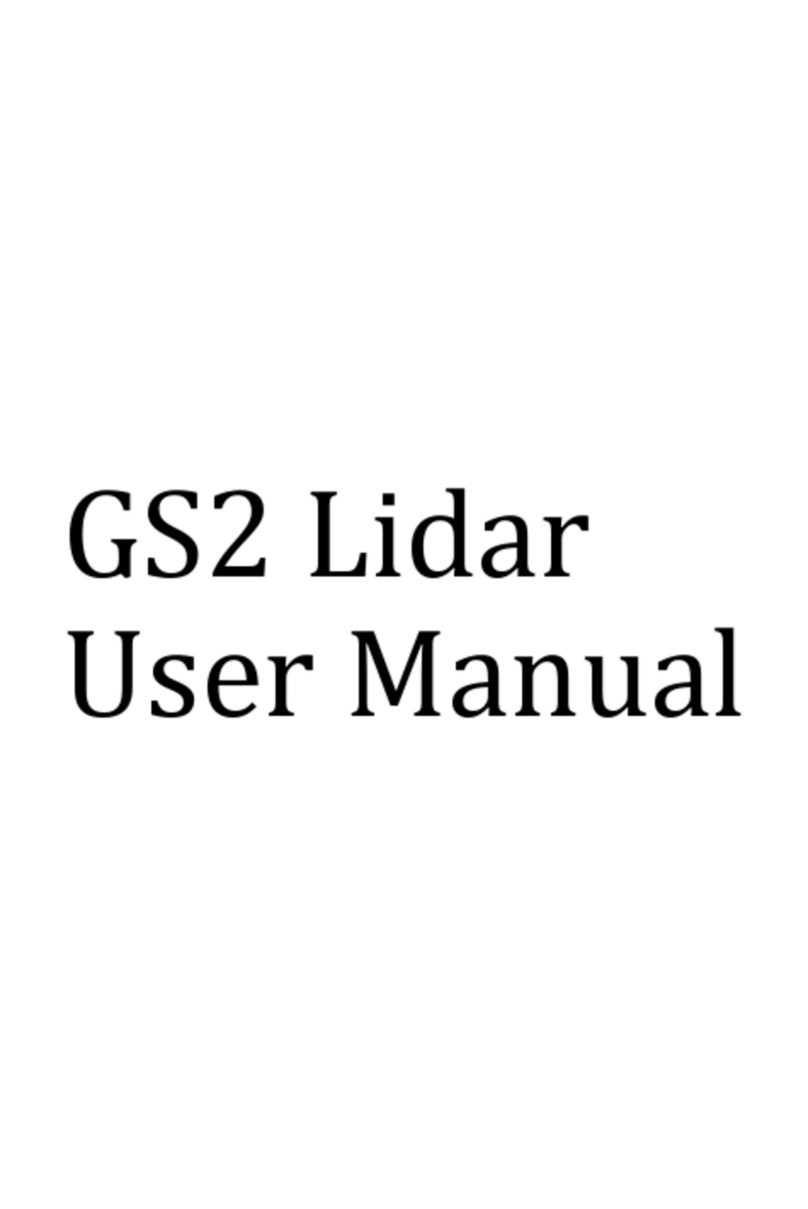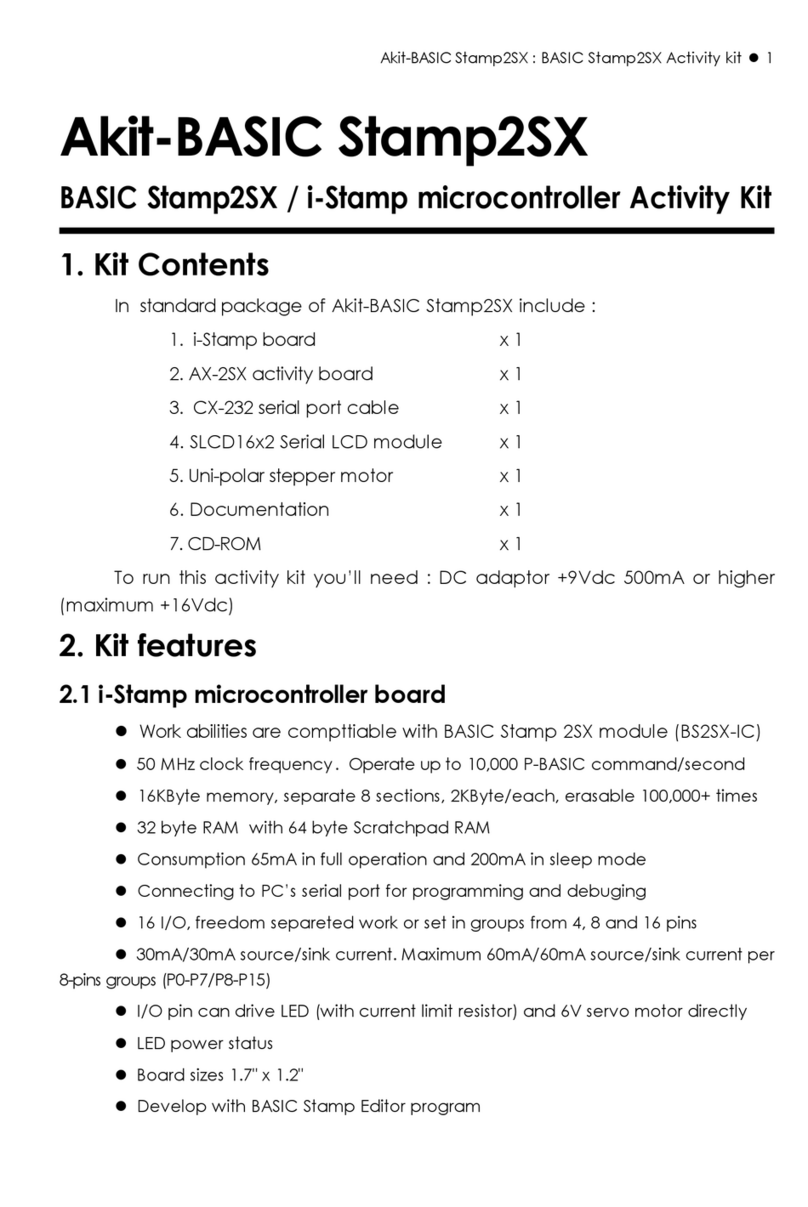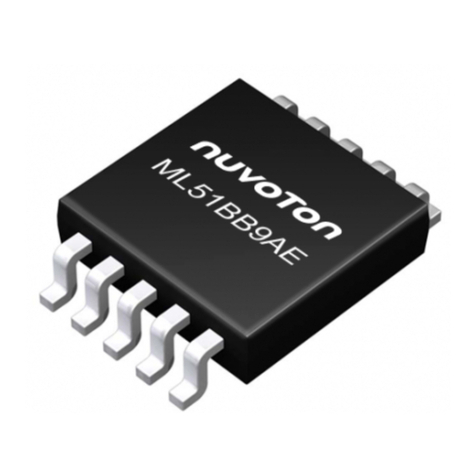
LPC4357 Developer’s Kit - User’s Guide
Copyright 2018 © Embedded Artists AB
2.2.1 ESD sensitivity on JTAG interface
Note that the LPC4357 MCU is sensitive to ESD on the JTAG port. Observe extra care around this.
Make sure the ground of the JTAG interface is connected to the OEM Base Board ground
before even connecting the JTAG interface. Never have the OEM Board unpowered while the
JTAG pod is powered.
2.3 General Handling Care
Handle the LPC4357 OEM Board and OEM Base Board with care. The boards are not mounted in a
protective case/box and are not designed for rough physical handling. Connectors can wear out after
excessive use. The OEM Base Board is designed for prototyping use, and not for integration into an
end-product.
For boards with LCD, do not exercise excessive pressure on the LCD glass area. That will damage the
display. Also, do not apply pressure on the flex cables connecting the LCD/touch screen. These are
relatively sensitive and can be damaged if too much pressure is applied to them.
Note that Embedded Artists does not replace boards where the LCD has been improperly
handled.
2.4 Code Read Protection
The LPC4357 has a Code Read Protection function (specifically CRP3, see datasheet for details) that,
if enabled, will make the LPC4357 impossible to reprogram (unless the user program has implemented
such functionality).
Note that Embedded Artists does not replace LPC4357 OEM boards where the LPC4357 has
CRP3 enabled. It’s the user’s responsibility to not invoke this mode by accident.
2.5 CE Assessment
The LPC4357 Developers Kit (consisting of the LPC4357 OEM Board and OEM Base Board) is CE
marked. See separate CE Declaration of Conformity document.
The LPC4357 Developers Kit is a class A product. In a domestic environment this product may cause
radio interference in which case the user may be required to take adequate measures.
EMC emission test has been performed on the LPC4357 Developers Kit. Standard interfaces like
Ethernet, USB, serial have been in use. General expansion connectors where internal signals are
made available (for example processor pins) have been left unconnected. Connecting other devices to
the product via the general expansion connectors may alter EMC emission. It is the user’s
responsibility to make sure EMC emission limits are not exceeded when connecting other devices to
the general expansion connectors of the LPC4357 Developers Kit.
Due to the nature of the LPC4357 Developers Kit –an evaluation board not for integration into an end-
product –fast transient immunity tests and conducted radio-frequency immunity tests have not been
executed. Externally connected cables are assumed to be less than 3 meters. The general expansion
connectors where internal signals are made available do not have any other ESD protection than from
the chip themselves. Observe ESD precaution.
Note that the LPC4357 OEM board is classified as a component and is hence not CE marked
separately. It can perform different functions in different integrations and it does not have a direct
function. It is therefore not in the scope of the CE Directive. An end product, where an OEM Board is
integration into, is however very likely to need CE marking.




















